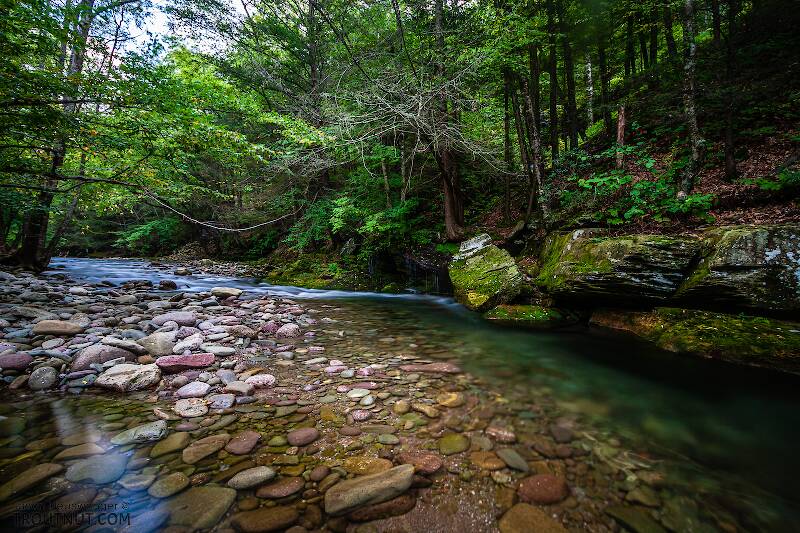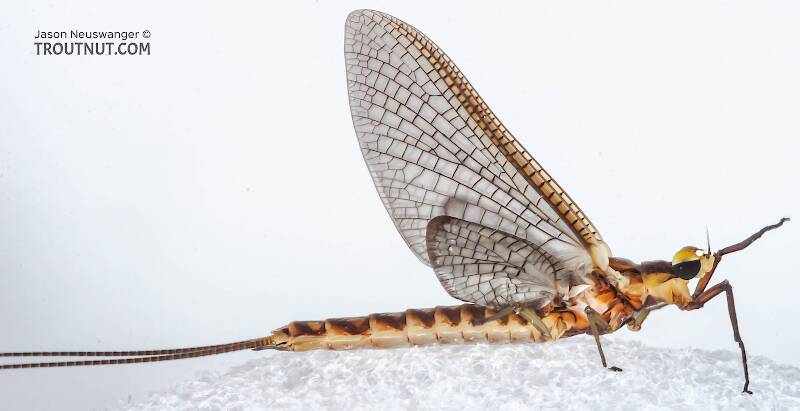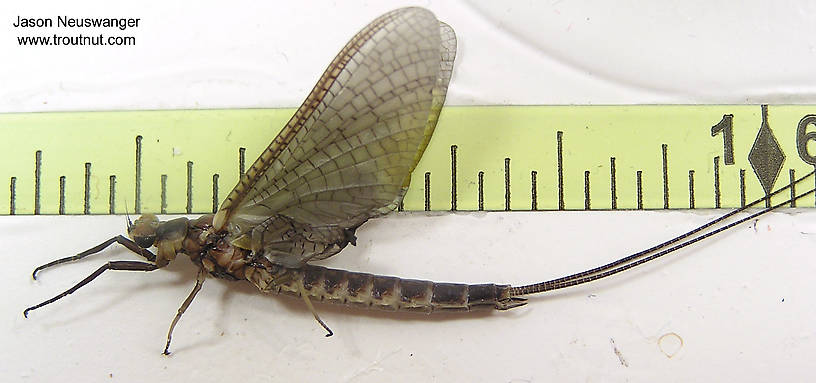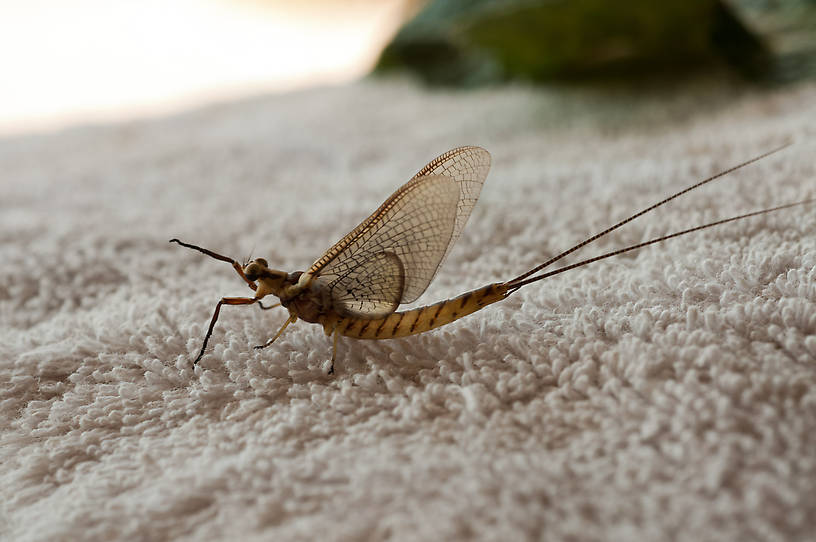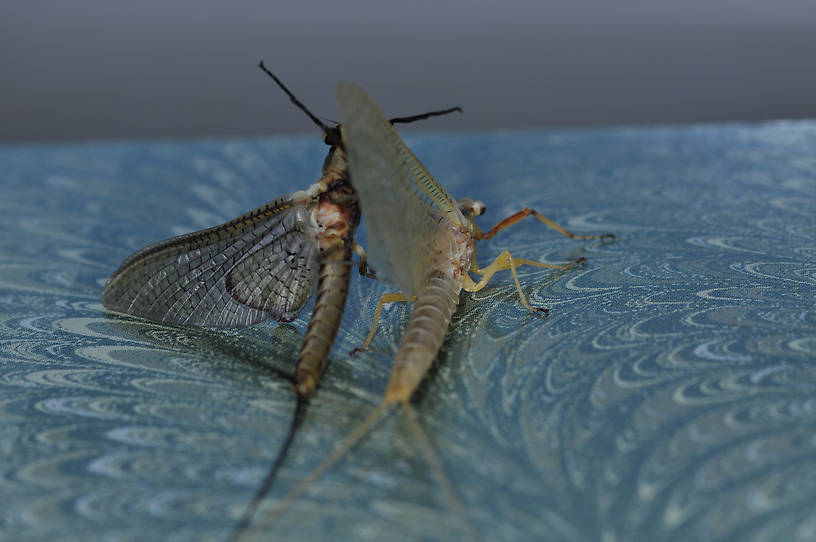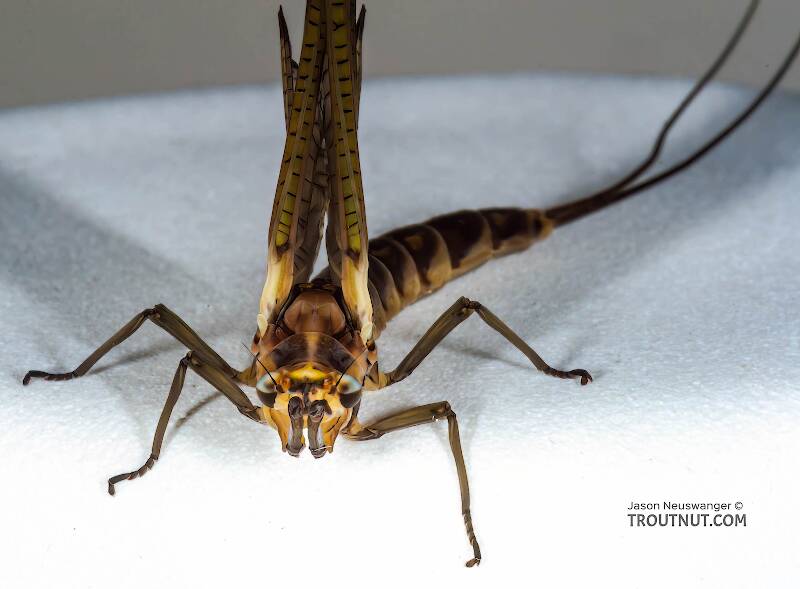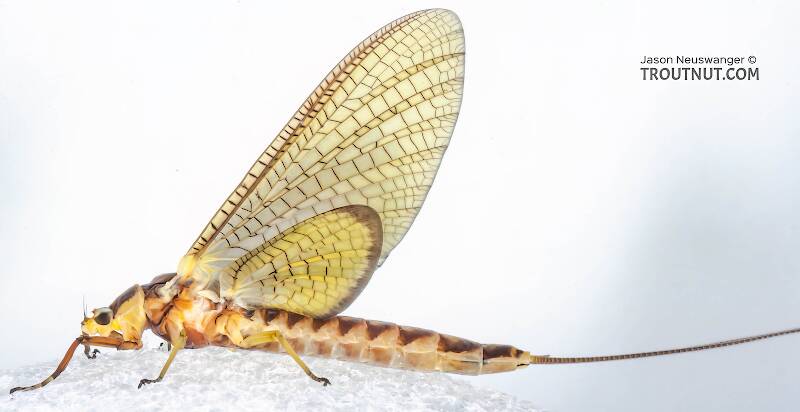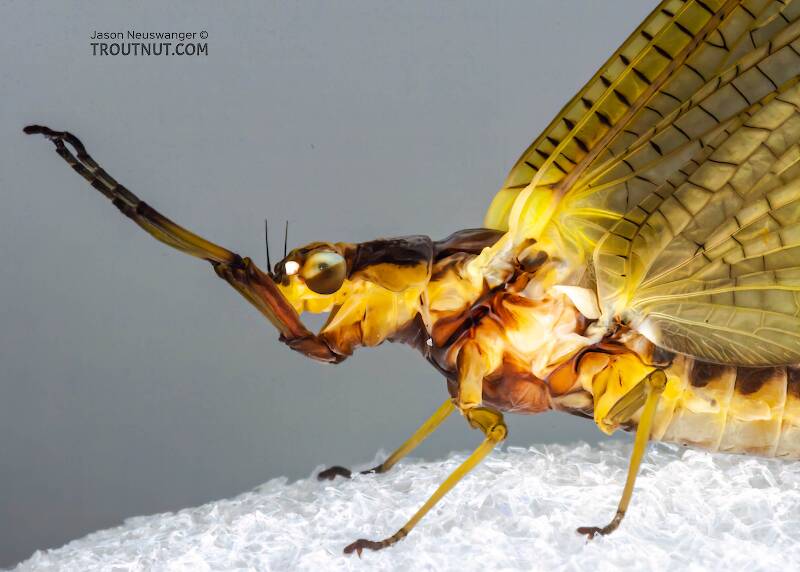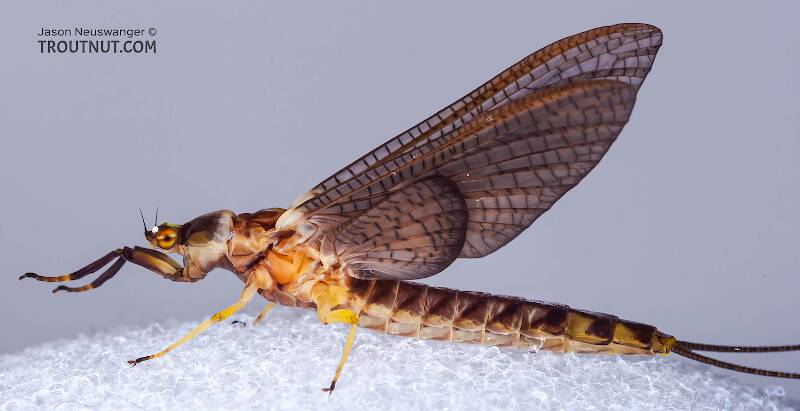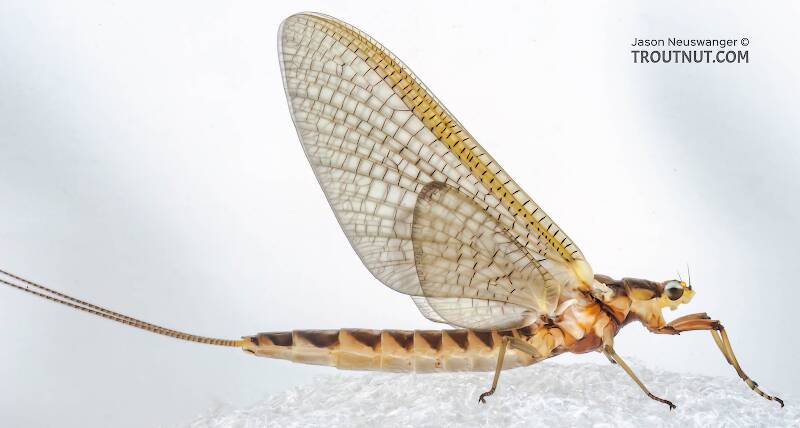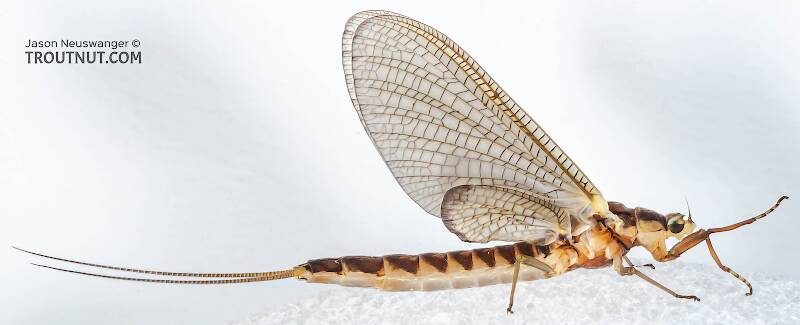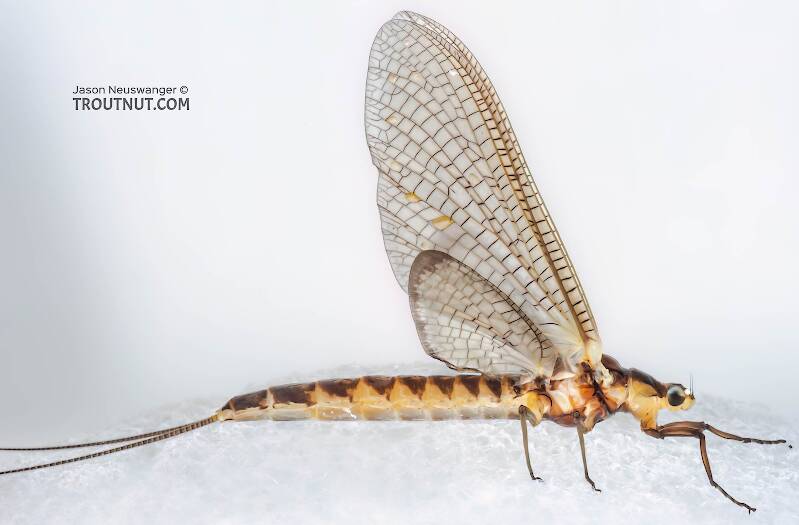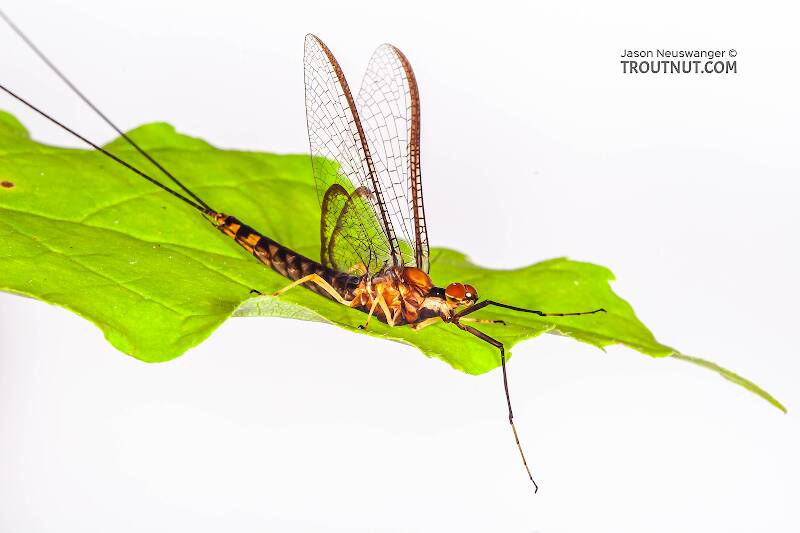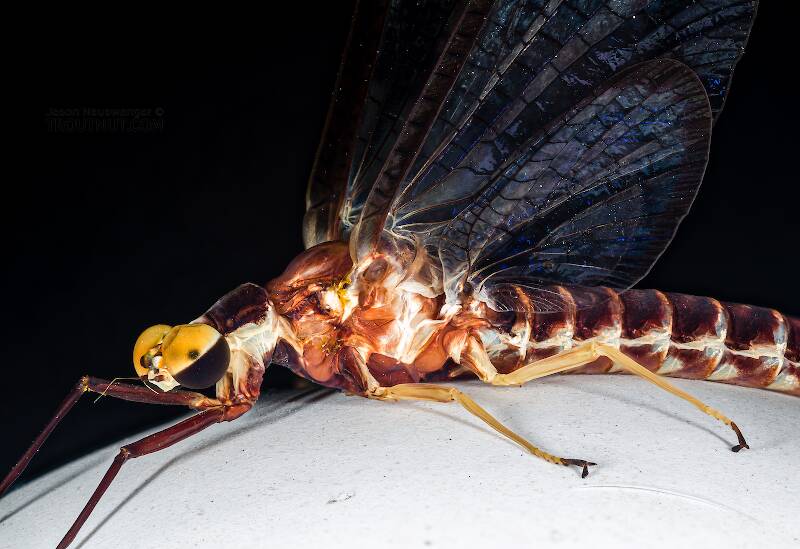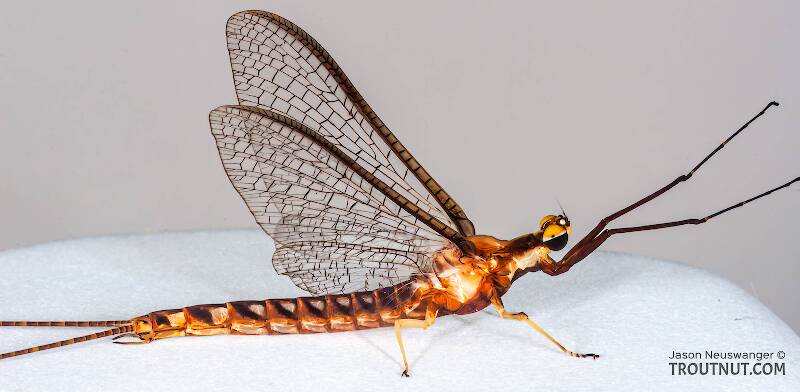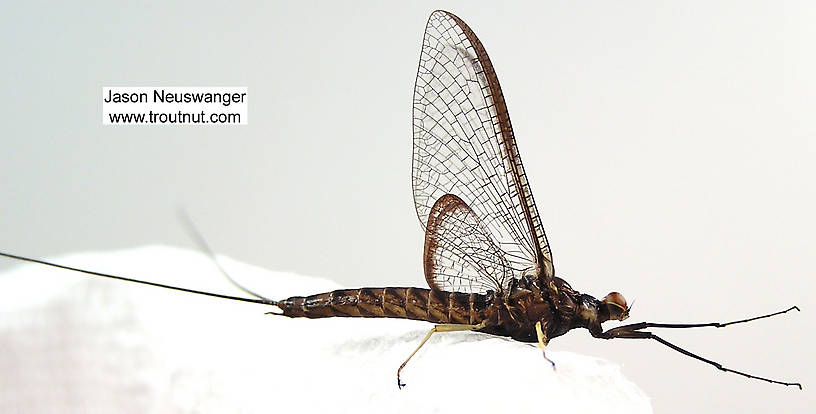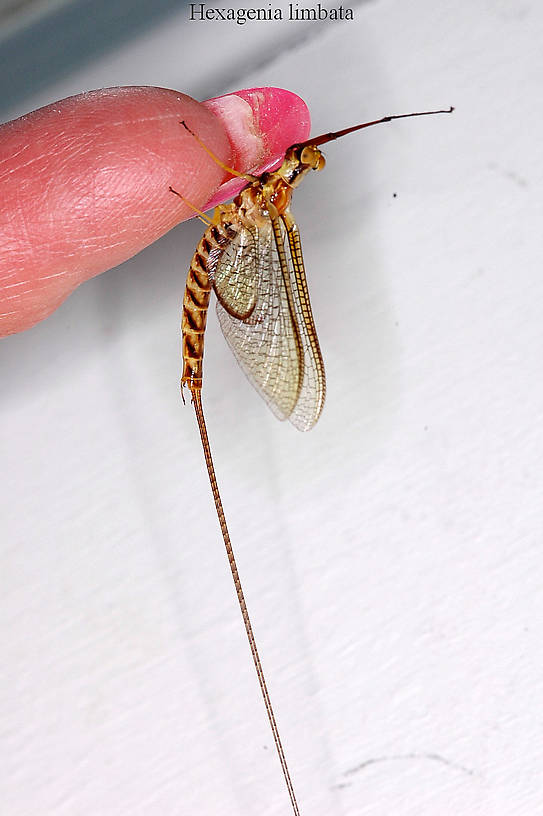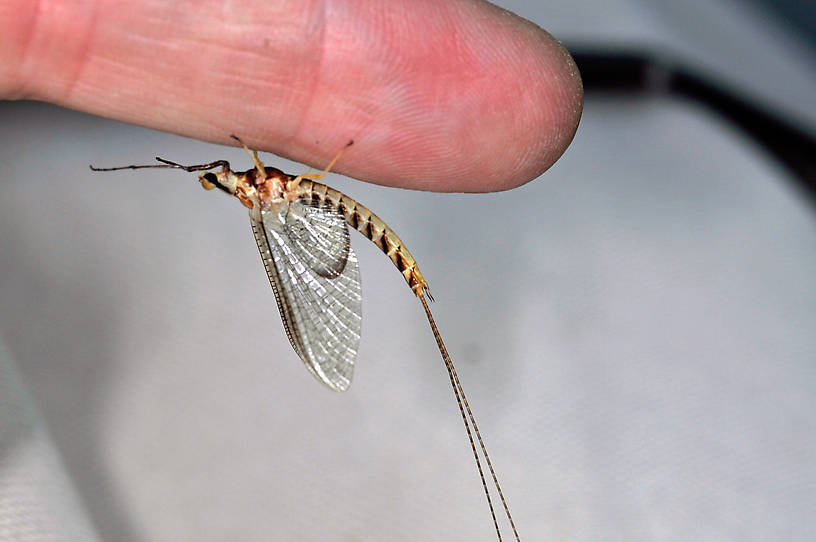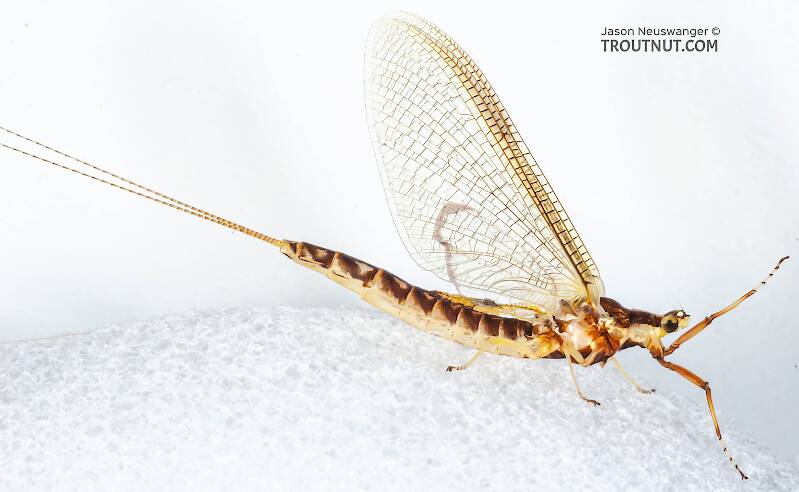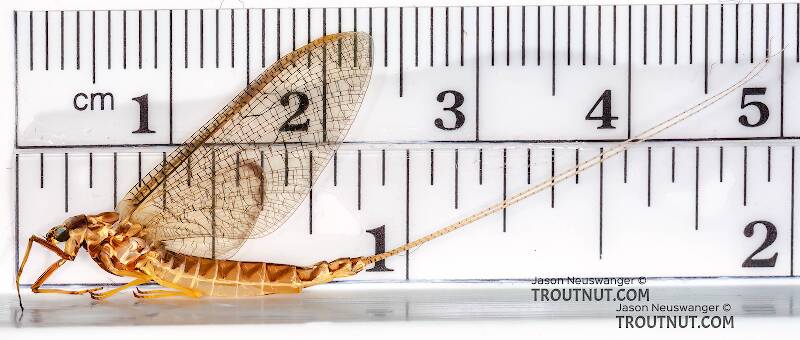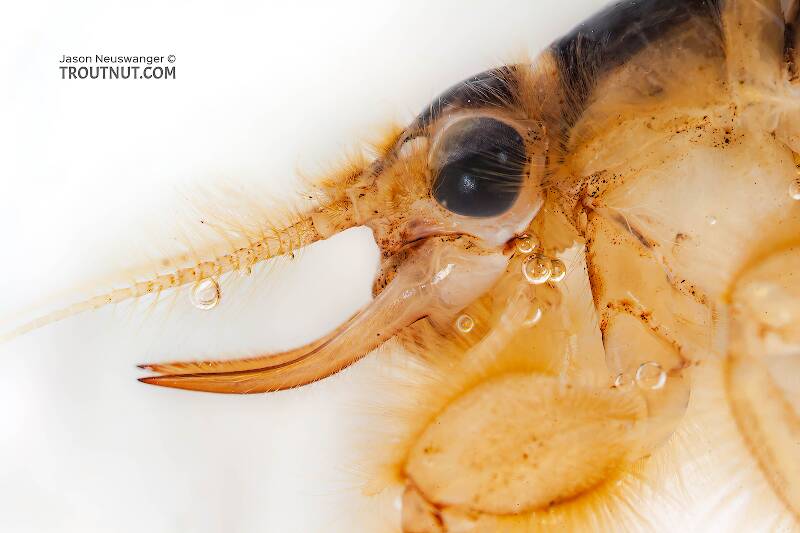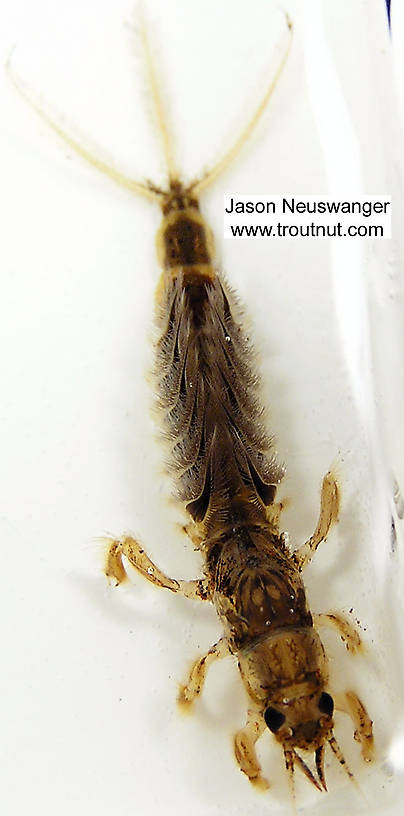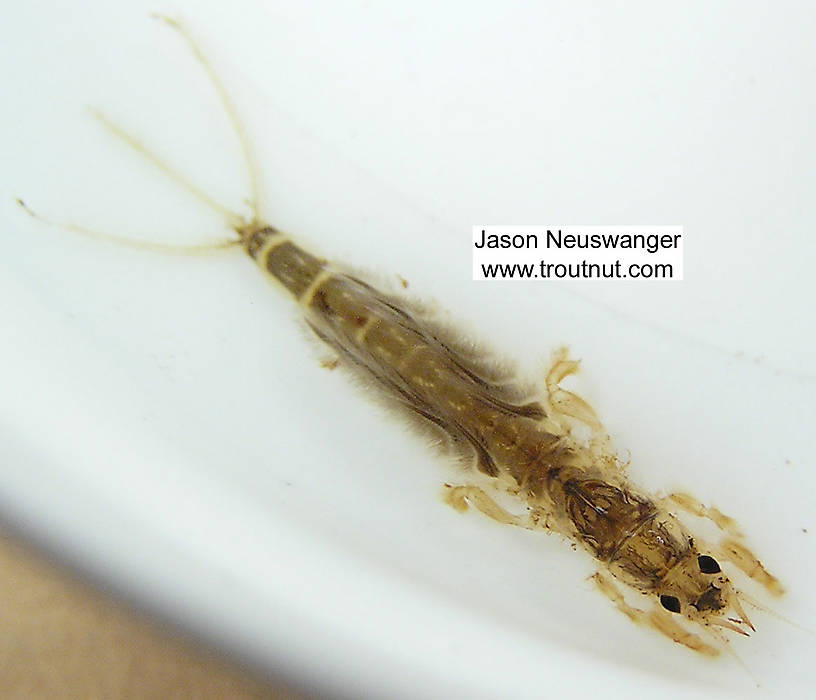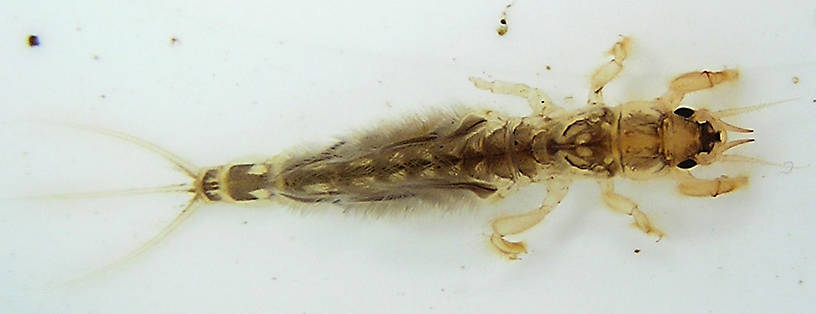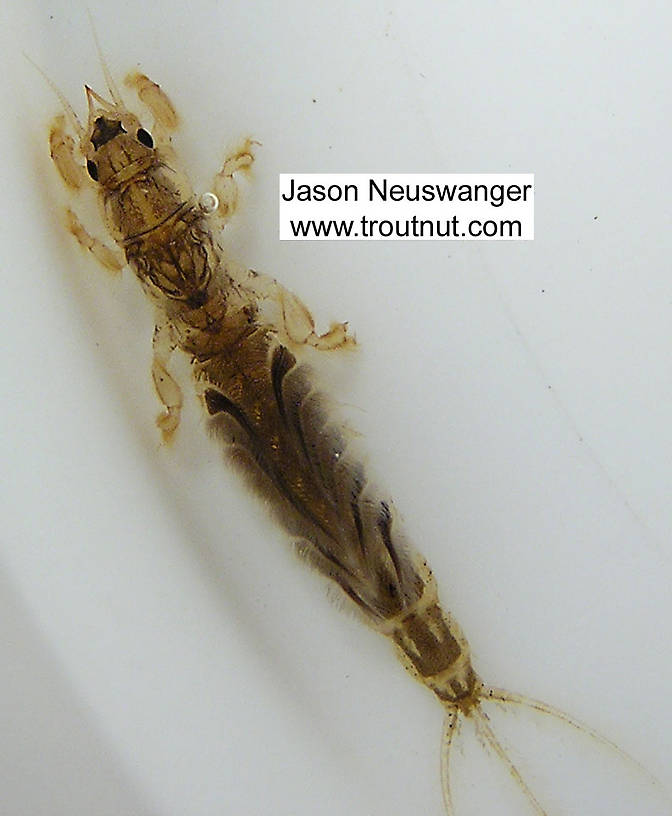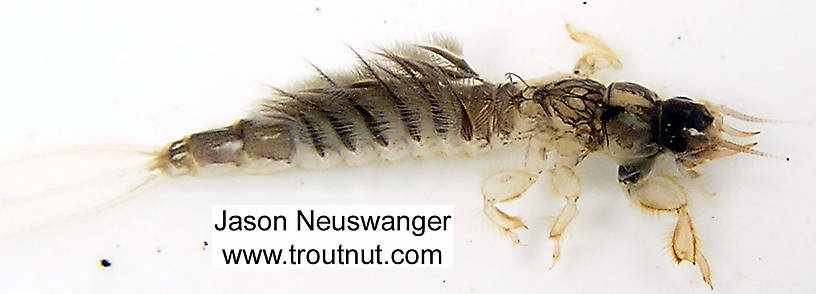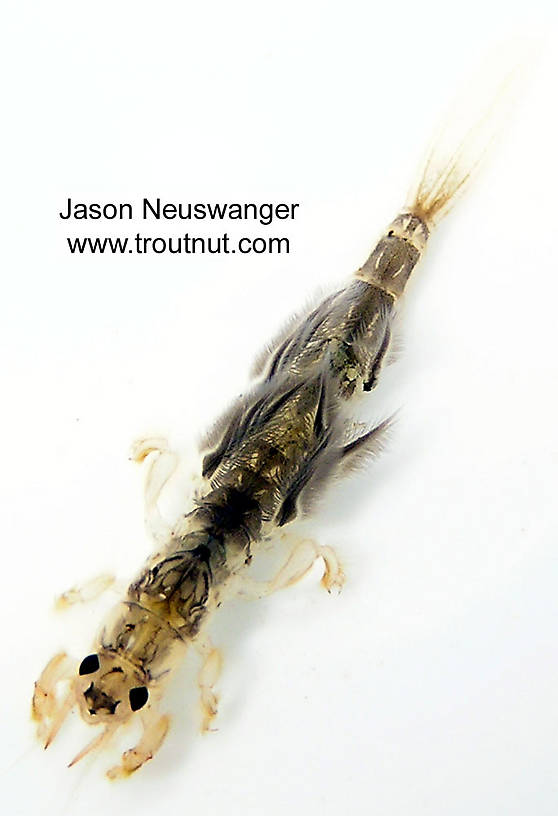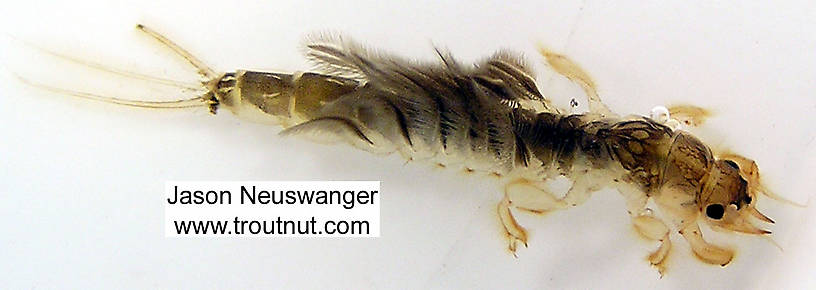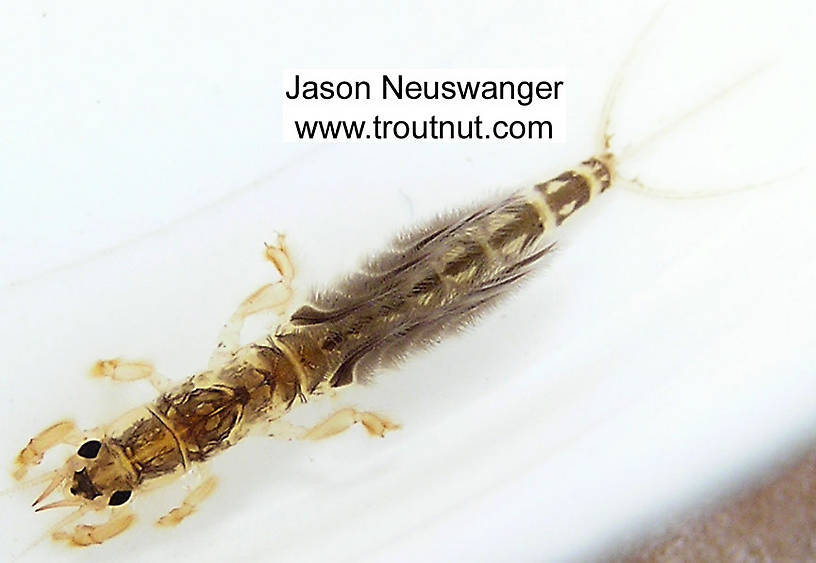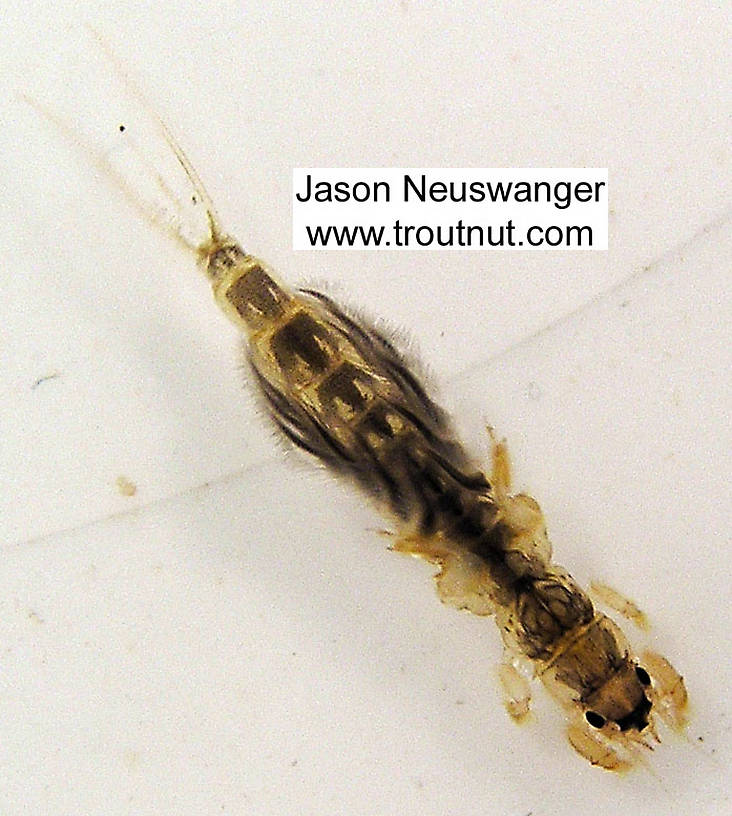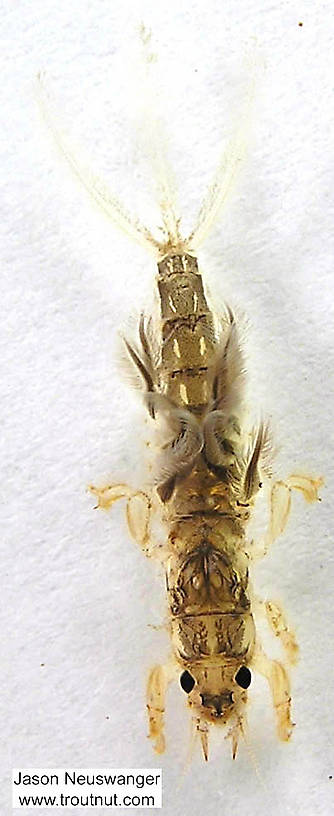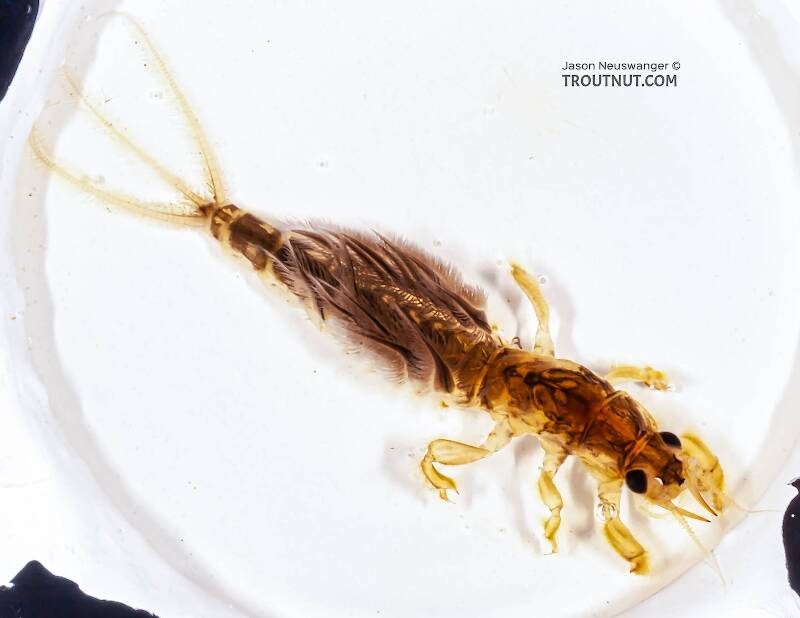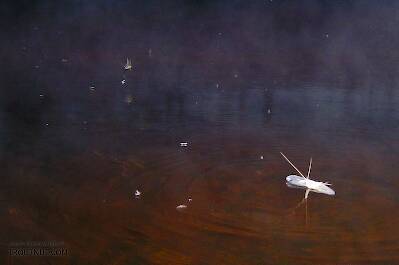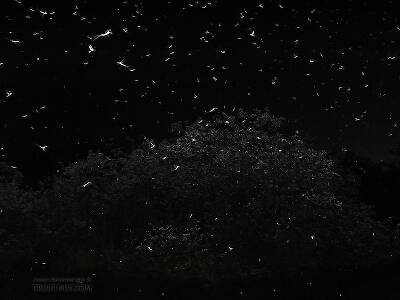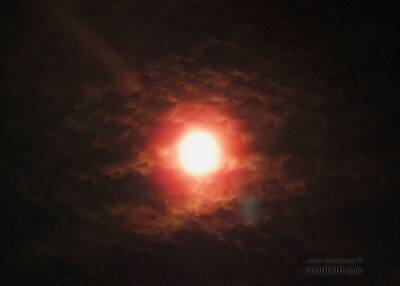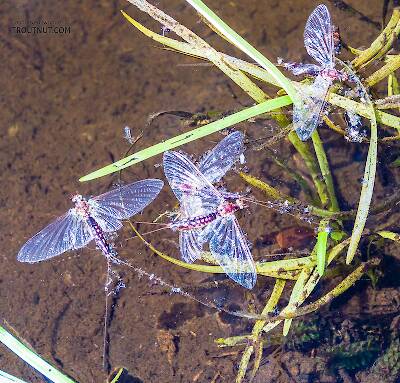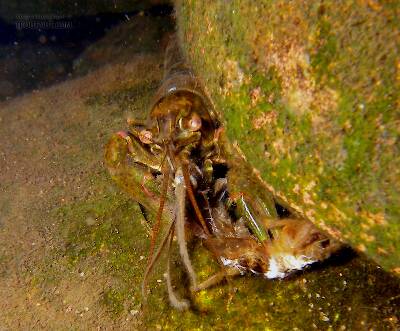
Salmonflies
Pteronarcys californica
The giant Salmonflies of the Western mountains are legendary for their proclivity to elicit consistent dry-fly action and ferocious strikes.
Featured on the forum

This one was surprisingly straightforward to identify. The lack of a sclerite at the base of the lateral hump narrows the field quite a bit, and the other options followed fairly obvious characteristics to Clostoeca, which only has one species, Clostoeca disjuncta.

Troutnut is a project started in 2003 by salmonid ecologist Jason "Troutnut" Neuswanger to help anglers and
fly tyers unabashedly embrace the entomological side of the sport. Learn more about Troutnut or
support the project for an enhanced experience here.
Mayfly Genus Hexagenia
These are huge mayflies. Hexagenia limbata, by far the most important species, is the second largest mayfly in the United States. The largest is its close relative, Litobrancha recurvata, which until recently was also in the genus Hexagenia.
Two minor species, Hexagenia atrocaudata and Hexagenia rigida, may be noticed later in the season than limbata.
Read each species page for emergence and other details.
Two minor species, Hexagenia atrocaudata and Hexagenia rigida, may be noticed later in the season than limbata.
Read each species page for emergence and other details.
Genus Range
Specimens of the Mayfly Genus Hexagenia
4 Male Duns
8 Female Duns
6 Male Spinners
2 Female Spinners
13 Nymphs
4 Streamside Pictures of Hexagenia Mayflies:
1 Underwater Picture of Hexagenia Mayflies:
Discussions of Hexagenia
Hex hatch water temperature range?
4 replies
Posted by NEMatt on May 23, 2014 in the species Hexagenia limbata
Last reply on Jul 5, 2016 by Bombillo
Hi,
New to the site - love it. I was wondering if there was a suggested range of water temperature at which the Hex likes to hatch.
Thanks
Matt
New to the site - love it. I was wondering if there was a suggested range of water temperature at which the Hex likes to hatch.
Thanks
Matt
What is the big DEAL about the HEX?
21 replies
Posted by Spinner on Jun 21, 2006 in the species Hexagenia limbata
Last reply on Jul 5, 2016 by Bombillo
fishing in the dark.......
stepping in holes?
I hate the dark........
I don't need the hex........
Len
stepping in holes?
I hate the dark........
I don't need the hex........
Len
Mayfly larvae -wigglers preservation as bait
20 replies
Posted by Teacherprea on Jun 2, 2007 in the species Hexagenia limbata
Last reply on Apr 29, 2014 by TNEAL
I am a fly fisherman but not a "purist". A friend of mine has a place on the UP of Michigan. He just called me and said a guy told him there is a way to preserve "wigglers." They use them alot up north, those that are not fly fishermen or ladies. They are fishing perch, bluegill and crappie. He heard there is a way to "blanch" them.Drop them in hot water for a few minutes and they turn rubbery. They then will keep indefinitely. Has anyone heard of this? If so, how close to correct is the procedure I mentioned??
Thanks for anyone's help.
Thanks for anyone's help.
Hex Hatch 2012
5 replies
Posted by Hdhungryman on Apr 15, 2012
Last reply on Aug 12, 2012 by Taxon
Forget the end of the world. The Hex Hatch is just about on again. For more than 7 years now, I have been making the journey north and have encountered one of the most prolific hex hatches I have ever seen (in the West that is). We all know that there are very specific conditions that must exist in order for this amazing event to occur. There are a few notable locations though I have found Henderson Springs in Big Bend, CA to be the most exciting from the perspective of a flyfisherman.
I am constantly keeping an eye out for when the hatch starts in this region. I will do my best to keep my post current as I get further updates. Make it a great season!
I am constantly keeping an eye out for when the hatch starts in this region. I will do my best to keep my post current as I get further updates. Make it a great season!
Hexagenia orlando
4 replies
Posted by Curtis on Feb 29, 2008
Last reply on Mar 1, 2011 by Jmd123
Does anyone have any hatch dates for hexagenia orlando in the Central Florida area? Several lakes near me have populations and I am gathering data. I have photos and one hatch record.
Start a Discussion of Hexagenia
Mayfly Genus Hexagenia
Taxonomy
Species in Hexagenia
Hexagenia atrocaudataLate Hexes
3
31
Hexagenia bilineataEmergent Mayflies
0
0
Hexagenia limbataHexes
30
146
Hexagenia orlando
0
0
Hexagenia rigidaGreat Olive-Winged Drakes
0
0
Species in Hexagenia: Hexagenia atrocaudata, Hexagenia bilineata, Hexagenia limbata, Hexagenia orlando, Hexagenia rigida

